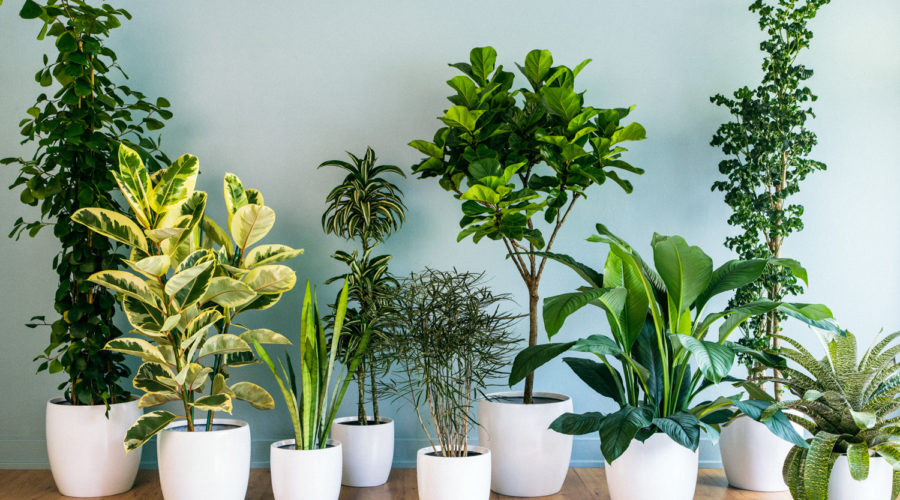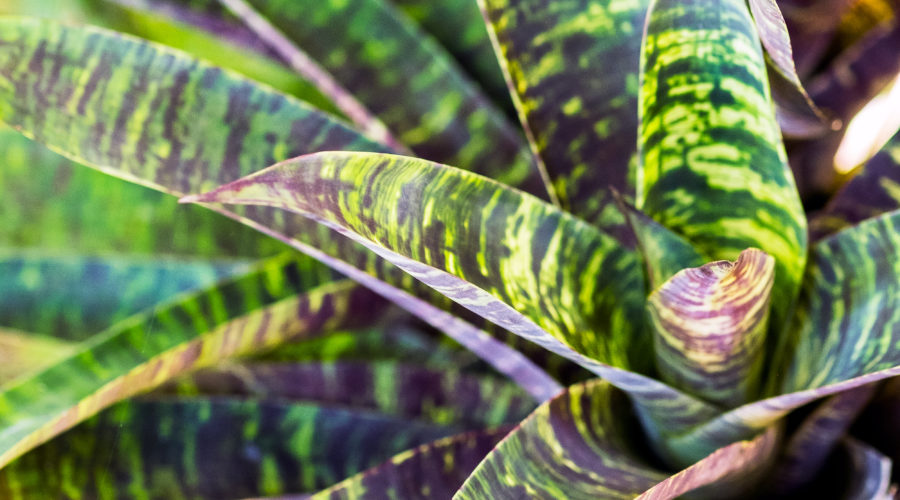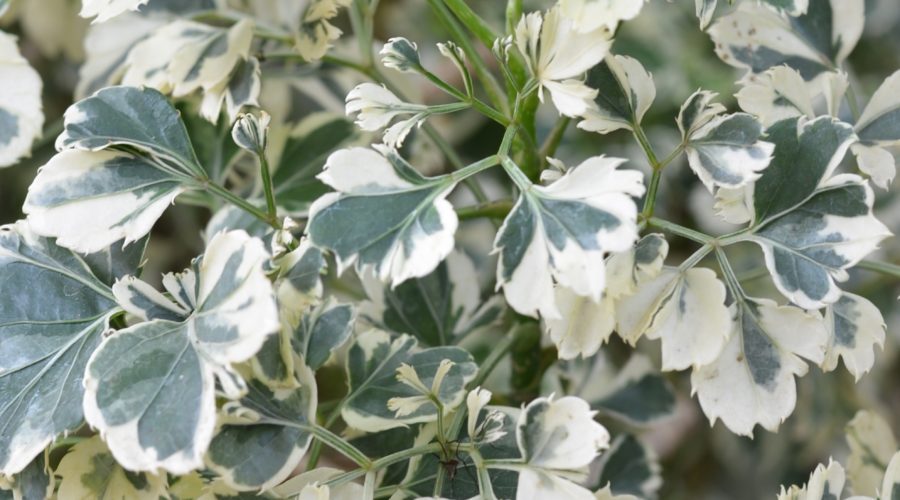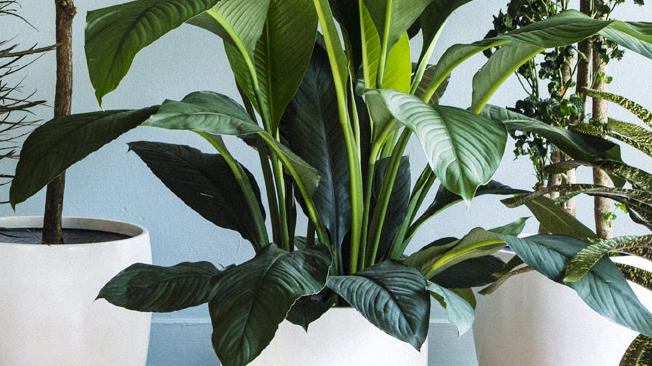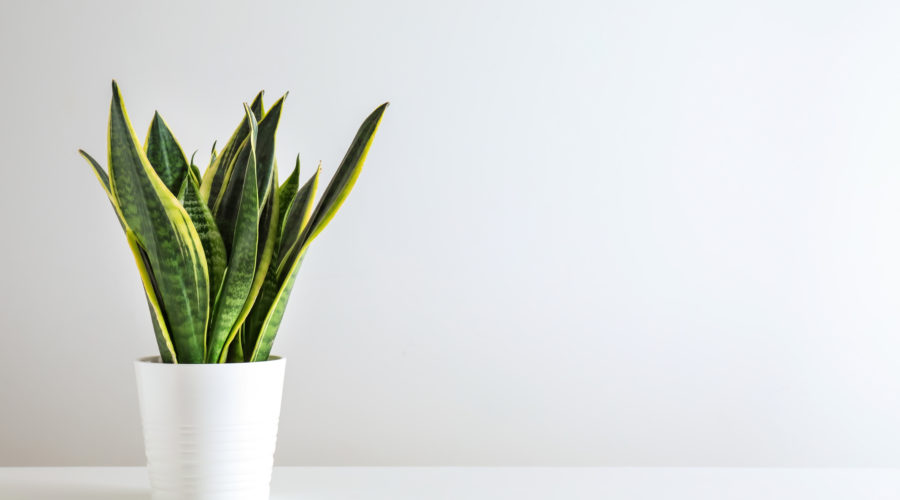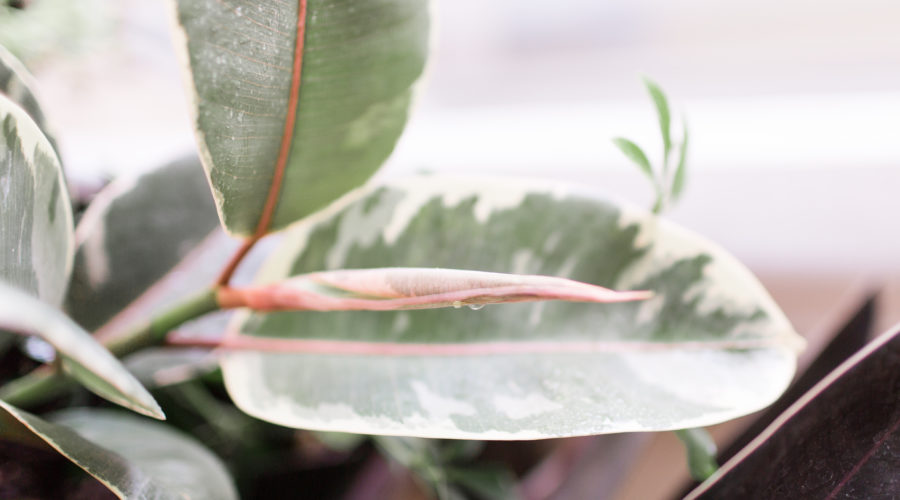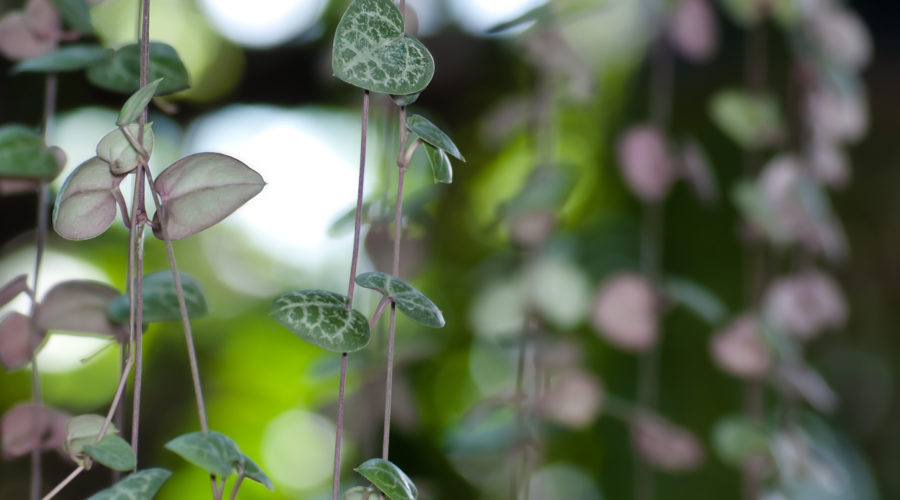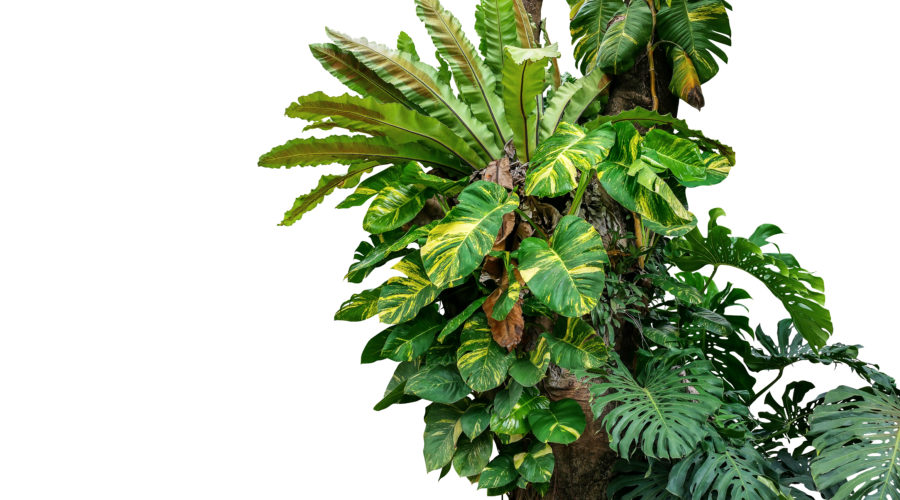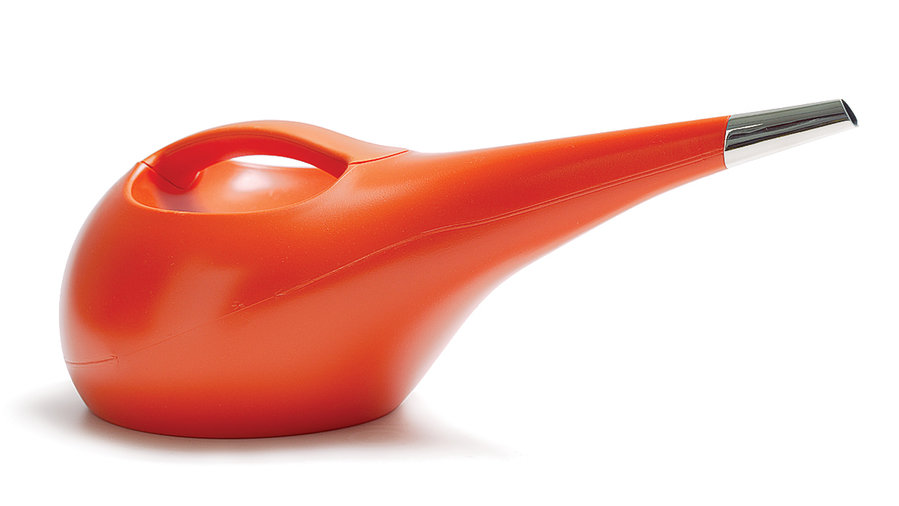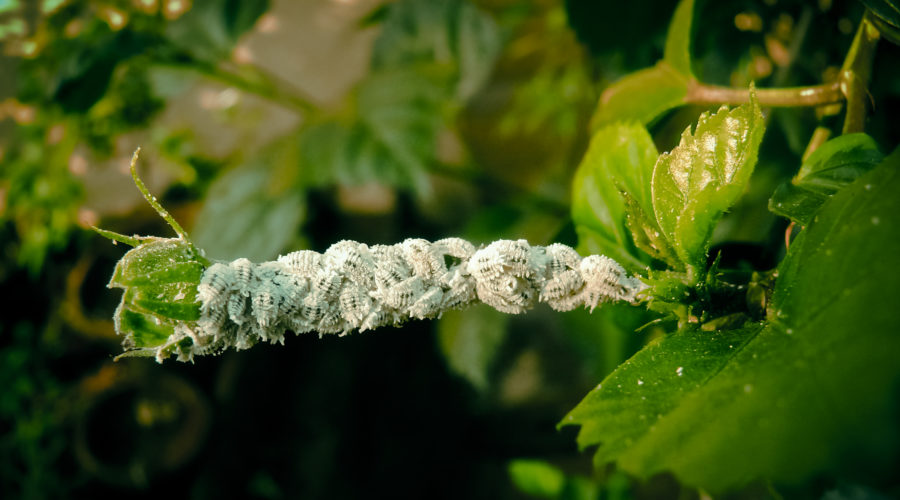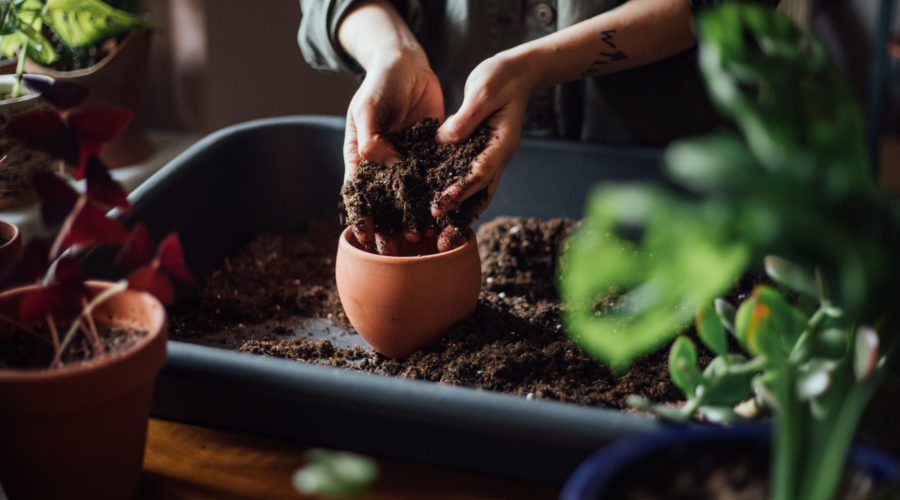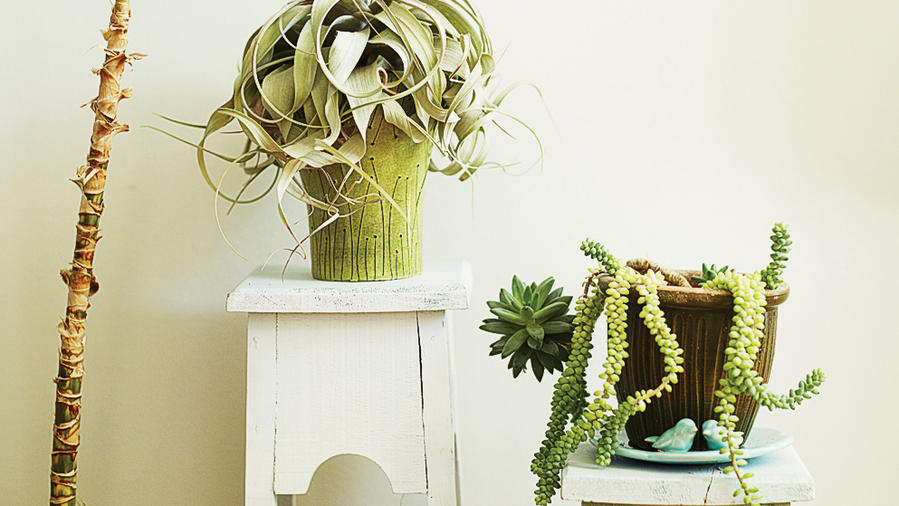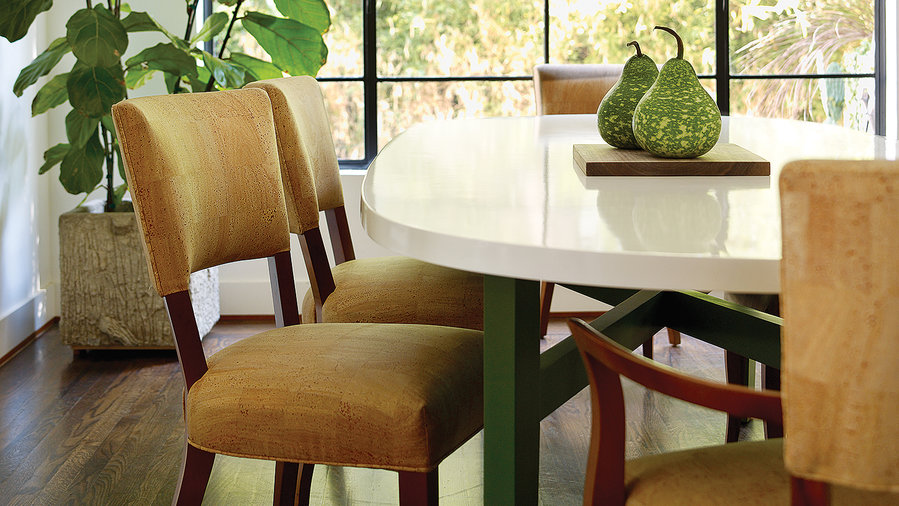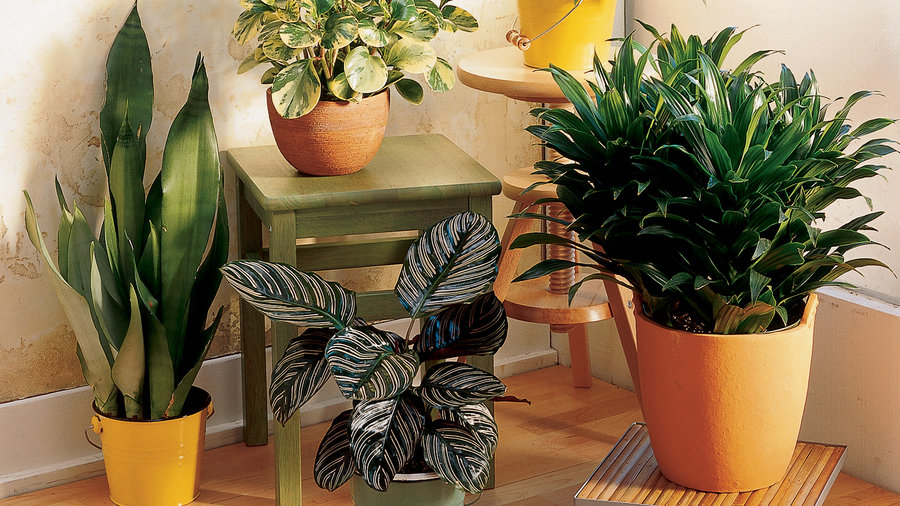Thomas Story
Houseplants as decor
Forget old-school spider plants. A new wave of unusual and dramatic indoor plants are as much decor as they are greenery. Although some can be pricey—ringing up at $100-plus—they can complete a room just as well as the perfect rug or piece of art. “Indoor plants add life and personality to an otherwise generic space,” says Caitlin Kreutz, horticulturist at San Francisco Foliage wholesale nursery. They’re an investment with great returns too: With the right care, many of these plants will live a decade or more.
Thomas J. Story
The Bromeliads
Bromeliads are epiphytic plants, meaning they use their very spindly roots merely to anchor themselves to other plants; typically trees, and nearly always in rainforests (one exception is Spanish moss, a Tillandsia related to air plants, and which grows as far north as Virginia state). This Vriesia hyroglyphica is called “King of the Bromeliads” for a reason: just look at those strapping leaves.
Foliage: Leaves are curvaceous, always dressed in skintight patterning.
Plant: This bromeliad reaches 3 feet tall and wide. Lives for 8 to 10 years before it blooms, then dies.
Light: Any
Water: Keep the “cup” in the center filled with water
Photo by Neung Pongsak / Getty Images
The Ming Dynasty
The aralias include dozens of species commonly used in indoor and outdoor landscaping, including Japanese aralia (aka paperplant), false aralia (Plerandra elegantissima), Fabian (“stump) aralia, and this exquisite variegated Ming aralia (Polyscias fruticosa).
Foliage: Ruffled, slightly coarse leaves on slim trunks—some of the most interesting texture on any arboreal houseplant.
Plant: A tender shrub from the tropics, it grows slowly to 12 feet.
Light: Moderate to bright.
Water: Water when soil has dried 2 to 3 inches below the surface.
Photo by Thomas J.Story
The Purifiers
Pretty much all plants will improve indoor air quality, but according to NASA, some do a better job than others. One of these little champions is Spathiphyllum ‘Sensation’ (pictured); spider plants (Chlorophytum comosum) and snake plants (Sansevieria spp.) also do a lot of heavy lifting.
Foliage: Lush 2-foot-long leaves of deep green are dramatic all year; luxuriant white flowers in spring.
Plant: A peace lily, it can reach 4 feet tall.
Light: Low to medium.
Photo by artpritsadee / Getty Images
The Darling
So many houseplants come and go in popularity, but Ficus lyrata ‘Little Fiddle’ fiddleleaf fig always seems to make its way back to “critical darling” status. As far as indoor trees go, it almost can’t be beat.
Foliage: Large, leathery, nearly violin-shaped leaves.
Plant: This stately plant can reach 20 feet tall. To maintain its size and shape, prune branches in early spring. Feed the plant after pruning; rotate it every few weeks to keep it from leaning.
Light: Moderate to bright.
Photo by serezniy/Getty Image
The Tanks
If you want an unkillable houseplant, go with snake plant (Sansevieria spp.). Sanseveria ‘Silver Queen’ has the same growth habit as pictured, but with a silvery cast to the leaves’ striations.
Foliage: Silvery green leaves are stiff, slightly twisted, and lightly mottled.
Plant: A standout among snake plants, it reaches 4 to 5 feet tall and thrives on neglect.
Light: Moderate to bright.
Photo by marylooo / Getty Images
The Dragon Trees
The Madagascar dragon trees (Dracaena spp.) have been popular houseplants for decades, and for good reason: the foliage on these houseplants is to die for. The dragon trees grown indoors include Dracaena reflexa var. angustifolia (syn. Dracaena marginata; pictured) and numerous cultivars of Dracaena fragrans (‘Janet Craig’ is a favorite, and great for cleaning the air).
Foliage: Variegated leaves form slender rosettes that resemble fireworks.
Plant: Shapely and slender as a palm, it grows slowly to 8 feet tall with sturdy, upright canes.
Light: Moderate to bright.
Water: Take care not to overwater; that’s the number one killer of these otherwise easygoing plants. Allow the soil to dry fully between watering.
Crystal Bolin Photography / Getty Images
The Pink Ladies
Pink-leaved foliage houseplants are enjoying a *major* moment, and this sweet Ficus elastica variegata has the best of everything: it’s sturdy, it’s variegated, and its tender baby leaves are encased in these gorgeous pink sheaths. The midribs are cotton candy pink, too.
Foliage: Big leaves are simply spectacular.
Plant: Indoors, it reaches 10 feet tall. Leaves turn brown or drop if this finicky plant doesn’t get what it wants—no drafts, no wet leaves.
Light: Bright.
Photo by Exsodus / Getty Images
The Trailers
When planning decor around foliage houseplants, don’t overlook those with vertical interest. Hanging houseplants make great living curtains, and string-of-hearts (Ceropegia woodii) are one of the most delightful species. Spider plants (Chlorophyum comosum) are also a classic, as are devil’s ivy (aka pothos; Epipremnum aureum).
Foliage: succulent, heart-shaped, speckled leaves and long, slender, trailing stems.
Plant: Long stems need some space to stretch out, but can be wound around a frame to keep it out of the way
Light: Bright, filtered light
Water: Allow to dry fully between waterings
Photo by Chansom Pantip / Getty Images
Social Climbers
For another way to add vertical interest, philodendrons (Philodendron spp.), Swiss cheese plant (Monstera deliciosa) and other climbing plants can be trained onto a mossy pole or even just mounted to a slab of bark. Many foliage houseplants originate from tropical rainforests where the only way to get light is go up, and aerial roots that can absorb moisture and nutrients help it along the way.
Foliage: Sometimes variegated, fenestrate (with holes) in some species.
Plant: Knobby stems, elegant petioles, and long aerial roots; these plants were born to climb.
Light: Moderate to bright, indirect.
Water: Moist, but not sopping. Can handle drying out a bit between waterings.
Keep your houseplants happy
Quench thirst
Most houseplants need irrigating when the top 20 percent of their soil is dry to touch. Give them enough water so that it drains out of the pot, but don’t let the plants sit in saucers filled with standing water. You may need to water more often during warm months or when your indoor heater is on in winter. Plants in small containers dry out faster than those in larger ones. Spathiphyllum prefers moist soil, and Schefflera elegantissima needs consistent watering or it can lose leaves. Irrigate bromeliads by pouring water into their center cups.
Photo by yogesh_more / Getty Images
Watch for Pests
Healthy plants that get proper care are generally pest-free. Fungus gnats can appear atop soil that’s overwatered. Mealybugs (pictured), mites, and scale feed on leaves and sometimes stems. Check plants regularly so any pests don’t get out of hand; control small infestations by dabbing insects with rubbing alcohol or washing them off with soapy water. If unsuccessful, follow up with an organic pesticide, such as Houseplant Insect Killing Soap or Houseplant Insect Killer from Safer (saferbrand.com). Spray plants outdoors or in a well-ventilated area inside.
Photo by agrobacter / Getty Images
Keep up with growth spurts
More: See how to repot a houseplant
Feed growing plants (not in winter) with a slow-release houseplant fertilizer according to label directions. When the plant begins to outgrow its pot (about every year or two), move it into a slightly larger container (about 2 inches wider), repotting in the spring. If you’d rather keep it in the same pot, prune the roots using this technique: Knock the plant out of its pot. Then, using a sharp knife, shave roughly an inch off the outsides of the rootball; don’t remove more than 20 percent of it. Refill the gap between the shaved rootball and the pot sides with fresh potting soil.
Let there be light
Choose plants right for the light levels in your space. Low light is what you get in unlit corners and rooms that lack direct sun. Moderate light is filtered through sheer drapes or reflected off interior surfaces. Bright light is sun that passes through a window or skylight. Avoid direct sun-light; it can scorch leaves.
Maintain good posture
If you notice that your plant is leaning toward its light source and becoming lopsided, rotate the pot every month or so.
Keep it clean
Periodically dust off leaves with a damp cloth, or rinse smaller plants in the shower with lukewarm water. If the weather’s warm, you can move plants outdoors temporarily to gently hose off the foliage. Dry the leaves after rinsing, then bring the plant back indoors.
